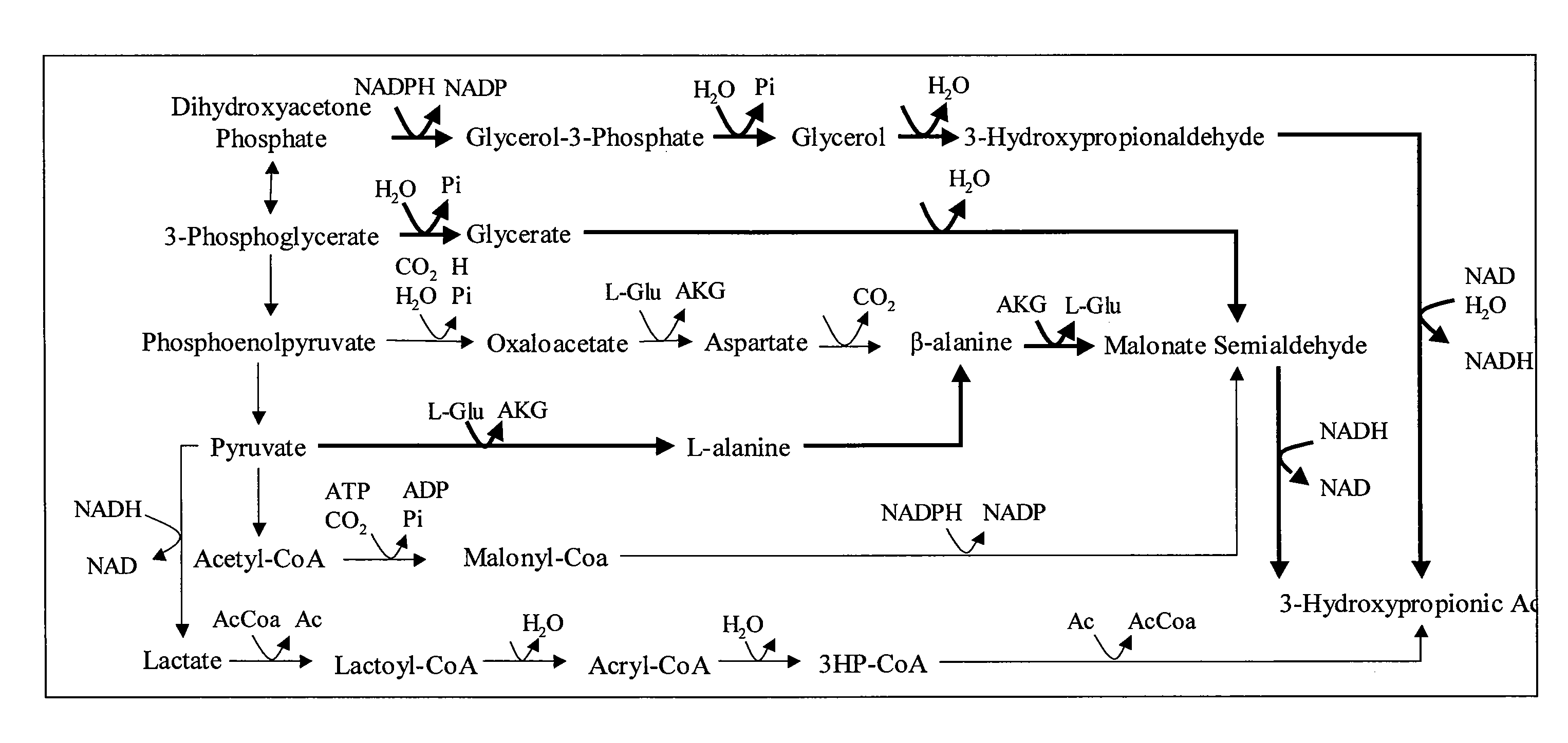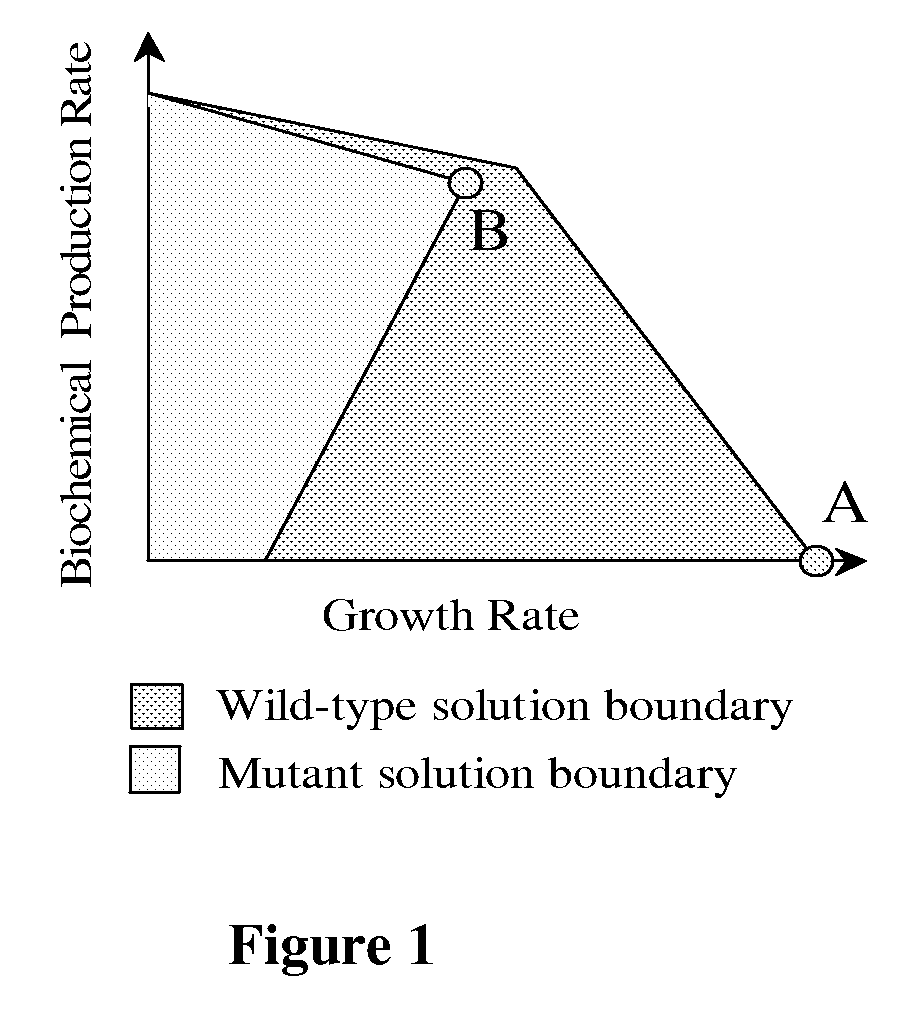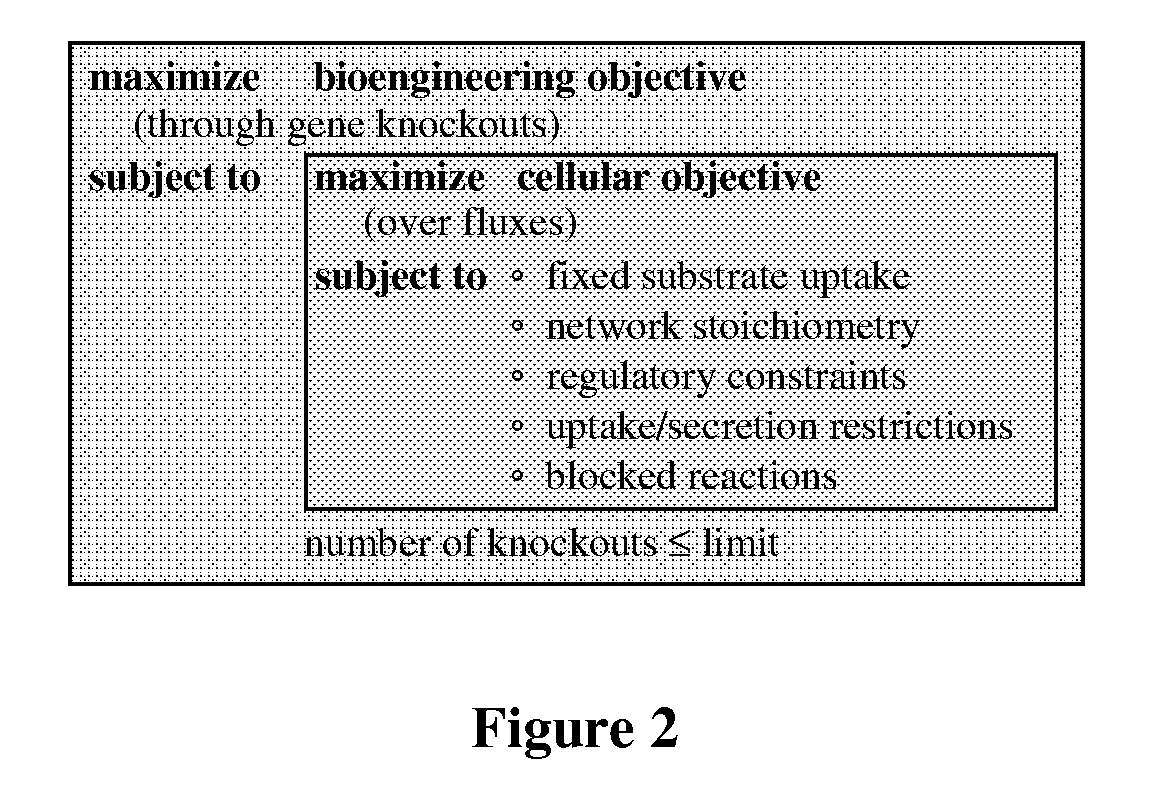Methods and Organisms for Growth-Coupled Production of 3-Hydroxypropionic Acid
- Summary
- Abstract
- Description
- Claims
- Application Information
AI Technical Summary
Benefits of technology
Problems solved by technology
Method used
Image
Examples
example i
Microorganisms Having Growth-Coupled Production of 3-Hydroxypropionic Acid
[0097]In this Example, the metabolic engineering strategies identified by the methods described previously are described. Overall, several hundred plausible strategies were identified. A summary of the conversion stoichiometry of several 3-HP pathways can be found in Table 1 below. Table 2 sets forth a listing of E. coli genes responsible for catalyzing reactions targeted for removal whereas Table 3 provides the corresponding metabolic abbreviations. Table 4 provides the Blattner numbers corresponding to the genes listed in Table 2.
[0098]Briefly, particularly useful designs for the purpose of demonstrating the methods described herein were placed into three categories: (1) removal of competing fermentation pathways, (2) elimination of pyruvate consuming reactions, and (3) alternative strategies. The solution boundaries for each design are obtained by separately maximizing and minimizing 3-HP production at ever...
PUM
 Login to View More
Login to View More Abstract
Description
Claims
Application Information
 Login to View More
Login to View More - R&D
- Intellectual Property
- Life Sciences
- Materials
- Tech Scout
- Unparalleled Data Quality
- Higher Quality Content
- 60% Fewer Hallucinations
Browse by: Latest US Patents, China's latest patents, Technical Efficacy Thesaurus, Application Domain, Technology Topic, Popular Technical Reports.
© 2025 PatSnap. All rights reserved.Legal|Privacy policy|Modern Slavery Act Transparency Statement|Sitemap|About US| Contact US: help@patsnap.com



